Metabolism-associated danger signal-induced immune response and reverse immune checkpoint-activated CD40+ monocyte differentiation
- PMID: 28738836
- PMCID: PMC5525309
- DOI: 10.1186/s13045-017-0504-1
Metabolism-associated danger signal-induced immune response and reverse immune checkpoint-activated CD40+ monocyte differentiation
Abstract
Adaptive immunity is critical for disease progression and modulates T cell (TC) and antigen-presenting cell (APC) functions. Three signals were initially proposed for adaptive immune activation: signal 1 antigen recognition, signal 2 co-stimulation or co-inhibition, and signal 3 cytokine stimulation. In this article, we propose to term signal 2 as an immune checkpoint, which describes interactions of paired molecules leading to stimulation (stimulatory immune checkpoint) or inhibition (inhibitory immune checkpoint) of an immune response. We classify immune checkpoint into two categories: one-way immune checkpoint for forward signaling towards TC only, and two-way immune checkpoint for both forward and reverse signaling towards TC and APC, respectively. Recently, we and others provided evidence suggesting that metabolic risk factors (RF) activate innate and adaptive immunity, involving the induction of immune checkpoint molecules. We summarize these findings and suggest a novel theory, metabolism-associated danger signal (MADS) recognition, by which metabolic RF activate innate and adaptive immunity. We emphasize that MADS activates the reverse immune checkpoint which leads to APC inflammation in innate and adaptive immunity. Our recent evidence is shown that metabolic RF, such as uremic toxin or hyperhomocysteinemia, induced immune checkpoint molecule CD40 expression in monocytes (MC) and elevated serum soluble CD40 ligand (sCD40L) resulting in CD40+ MC differentiation. We propose that CD40+ MC is a novel pro-inflammatory MC subset and a reliable biomarker for chronic kidney disease severity. We summarize that CD40:CD40L immune checkpoint can induce TC and APC activation via forward stimulatory, reverse stimulatory, and TC contact-independent immune checkpoints. Finally, we modeled metabolic RF-induced two-way stimulatory immune checkpoint amplification and discussed potential signaling pathways including AP-1, NF-κB, NFAT, STAT, and DNA methylation and their contribution to systemic and tissue inflammation.
Keywords: CD40+ MC; Immune checkpoint; Metabolic risk factors; Metabolism-associated danger signal; Reverse-immune checkpoint.
Conflict of interest statement
Ethics approval and consent to participate
Not applicable.
Consent for publication
Not applicable.
Competing interests
The authors declare that they have no competing interests.
Publisher’s Note
Springer Nature remains neutral with regard to jurisdictional claims in published maps and institutional affiliations.
Figures
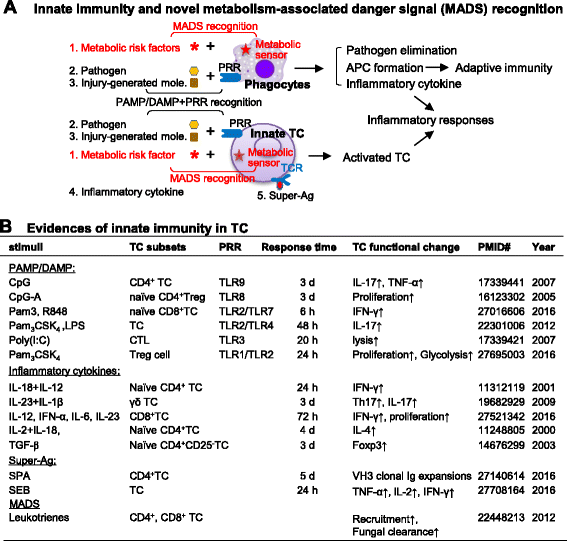
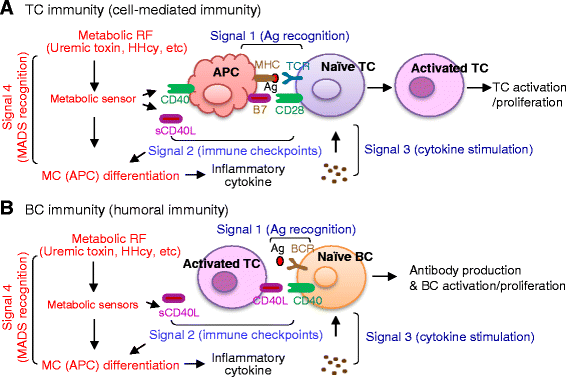

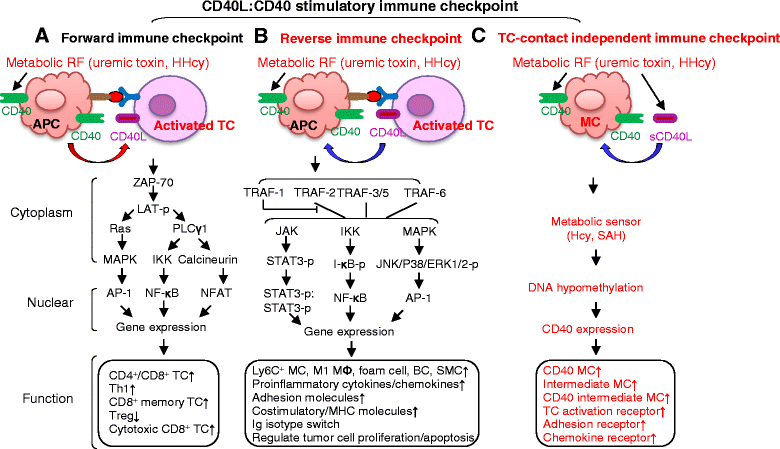
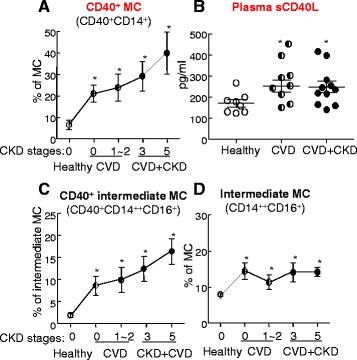
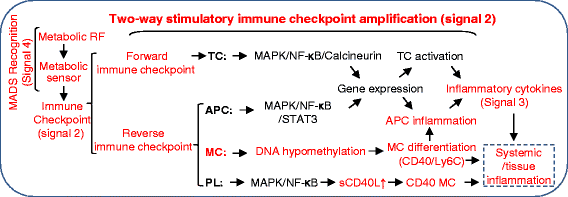
References
-
- Jenkins MK, Taylor PS, Norton SD, Urdahl KB. CD28 delivers a costimulatory signal involved in antigen-specific IL-2 production by human T cells. J Immunol. 1991;147(8):2461–6. - PubMed
Publication types
MeSH terms
Substances
Grants and funding
- R01 HL138749/HL/NHLBI NIH HHS/United States
- R01 HL108910/HL/NHLBI NIH HHS/United States
- R01 DK113775/DK/NIDDK NIH HHS/United States
- R01 HL117654/HL/NHLBI NIH HHS/United States
- R01 HL130233/HL/NHLBI NIH HHS/United States
- R01 HL131460/HL/NHLBI NIH HHS/United States
- R01 HL082774/HL/NHLBI NIH HHS/United States
- R01 HL110764/HL/NHLBI NIH HHS/United States
- R01 DK104116/DK/NIDDK NIH HHS/United States
- R01 HL132399/HL/NHLBI NIH HHS/United States
- F32 HL009445/HL/NHLBI NIH HHS/United States
- R01 HL116917/HL/NHLBI NIH HHS/United States
LinkOut - more resources
Full Text Sources
Other Literature Sources
Research Materials

